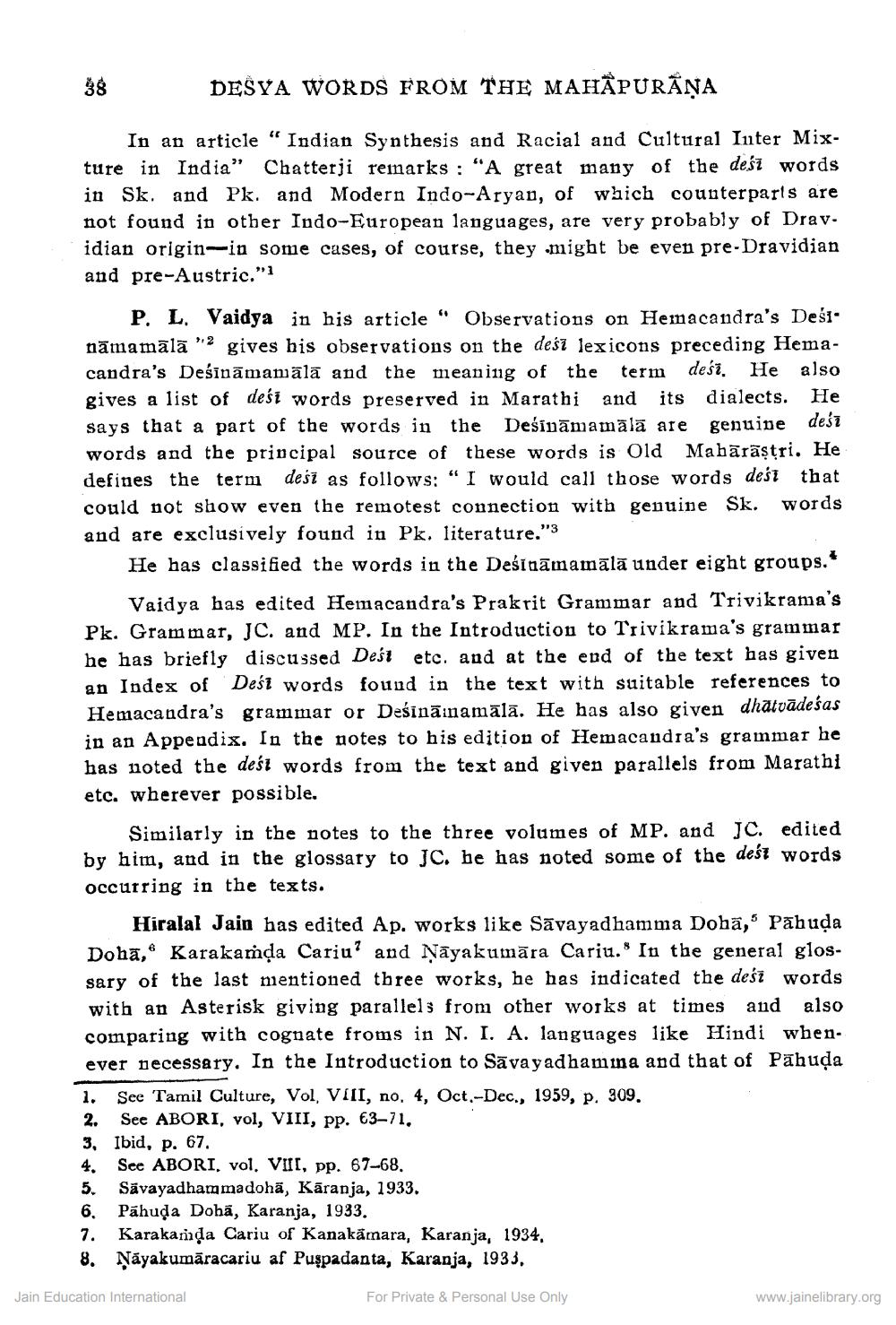________________
38
DEŠVA WORDS FROM THE MAHẦPURẤŅA
In an article "Indian Synthesis and Racial and Cultural Inter Mixture in India" Chatterji remarks : "A great many of the deść words in Sk. and Pk. and Modern Indo-Aryan, of which counterparts are not found in other Indo-European languages, are very probably of Dravidian origin-in some cases, of course, they might be even pre-Dravidian and pre-Austric."?
P. L. Vaidya in his article" Observations on Hemacandra's Deši. nāmamālā "2 gives his observations on the deśī lexicons preceding Hemacandra's Deśīnāmamālā and the meaning of the term desi. He also gives a list of desi words preserved in Marathi and its dialects. He says that a part of the words in the Deśināmamālā are genuine desī words and the principal source of these words is Old Mahārāştri. He defines the term desī as follows: “I would call those words dest that could not show even the remotest connection with genuine Sk. words and are exclusively found in Pk. literature."
He has classified the words in the Dešitāmamālā under eight groups.
Vaidya has edited Hemacandra's Prakrit Grammar and Trivikrama's Pk. Grammar, JC. and MP. In the Introduction to Trivikrama's grammar he has briefly discussed Dest etc. and at the end of the text has given an Index of Deść words found in the text with suitable references to Hemacandra's grammar or Deśināinamala. He has also given dhatvādeśas in an Appendix. In the notes to his edition of Hemacandra's grammar he has noted the dest words from the text and given parallels from Marathi etc. wherever possible.
Similarly in the notes to the three volumes of MP. and JC. edited by him, and in the glossary to JC. he has noted some of the dest words occurring in the texts.
Hiralal Jain has edited Ap. works like Sävayadhamma Dohā, Pāhuda Dohā,6 Karakamda Cariu? and Ņāyakumāra Cariu.“ In the general glossary of the last mentioned three works, he has indicated the deśī words with an Asterisk giving parallels from other works at times and also comparing with cognate froms in N. I. A. languages like Hindi when. ever necessary. In the Introduction to Sāvayadhamma and that of Pāhuda 1. See Tamil Culture, Vol. VIII, no. 4, Oct.-Dec., 1959, p. 309. 2. See ABORI, vol, VIII, pp. 63-71, 3. Ibid, p. 67. 4. See ABORI, vol. VIII, pp. 67-68.
Sävayadhammadohā, Kāranja, 1933.
Pähuda Dohā, Karanja, 1933. 7. Karakanda Cariu of Kanakämara, Karanja, 1934, 8. Ņayakumāracariu af Puspadanta, Karanja, 1933,
Jain Education International
For Private & Personal Use Only
www.jainelibrary.org




